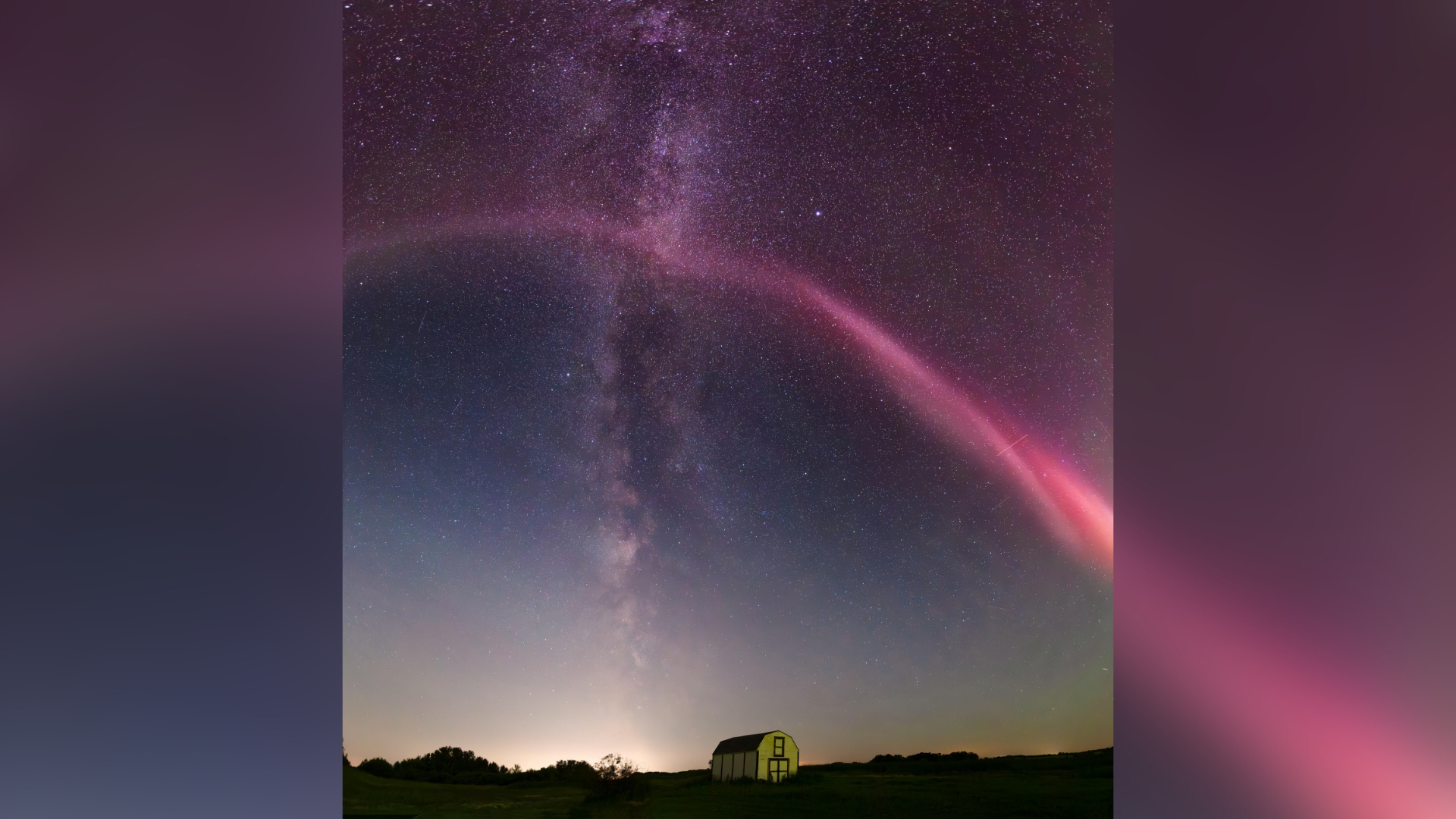
During a brief solar substorm overnight between July 31 and Aug. 1, full-time aurora chaser Justin Anderson proved that "being in the right place at the right time" pays off big time when it comes to hunting the northern lights.
"While editing the photos indoors, I noticed our all-sky camera was recording STEVE. I rushed back outside and captured the photo over our shed." Anderson told Space.com in an email.
Anderson's impressive photo shows STEVE arching and twirling against a beautiful backdrop starring the Milky Way in all its glory. Anderson also caught the dynamic northern lights putting on a great show too.
Not everyone is fortunate enough to see STEVE, let alone catch it on camera. In fact, the strange phenomenon was only formally discovered between 2015 and 2016 by citizen scientists according to the first study published on STEVE in Science Advances in 2018.
But this wasn't Anderson's first STEVE encounter. "I have photographed and videoed STEVE many times," Anderson told Space.com. Anderson's work, along with the work of other avid aurora chasers, has been used to study STEVE, their findings have been published in the journal Bulletin of the American Astronomical Society.

Though STEVE often accompanies auroras, the two phenomena are not the same.
Auroras are caused by electrically charged particles entering Earth's atmosphere, exciting gases, and causing them to release light as they return to their original energy (ground state). This light generates the northern lights (also known as the aurora borealis) in the Northern Hemisphere and the southern lights (also known as the aurora australis) in the Southern Hemisphere.
Whereas STEVE, which stands for Strong Thermal Emission Velocity Enhancement, is created when solar emissions, particularly fast-moving streams of plasma heat gas in the upper atmosphere. STEVE is essentially hot, glowing gas.

Though STEVE has to share the sky with bright and colorful dancing auroras, STEVE can hold its own, creating a captivating show for a more exclusive audience as the phenomenon doesn't just show up for anybody.
"Watching it twist and brighten against the Milky Way backdrop was an incredible experience," Anderson continued.
Related: Where and how to photograph the aurora

Before STEVE sparked up, Anderson had been enjoying the fleeting substorm, capturing stunning images and footage of the vivid auroras in great detail. But Anderson had to be quick.
"The aurora photo was taken during a brief substorm when the aurora intensified dramatically." Anderson continued.
"It was exceptionally bright to the naked eye, even my iPhone camera captured it in real-time video," said Anderson.
To see more of Justin Anderson's work, visit High Hopes Aurora.
Editor's note: If you capture a stunning photo or video of the northern lights (or southern lights!) and want to share them with Space.com for a possible story, send images, comments on the view and your location, as well as use permissions to spacephotos@space.com.







